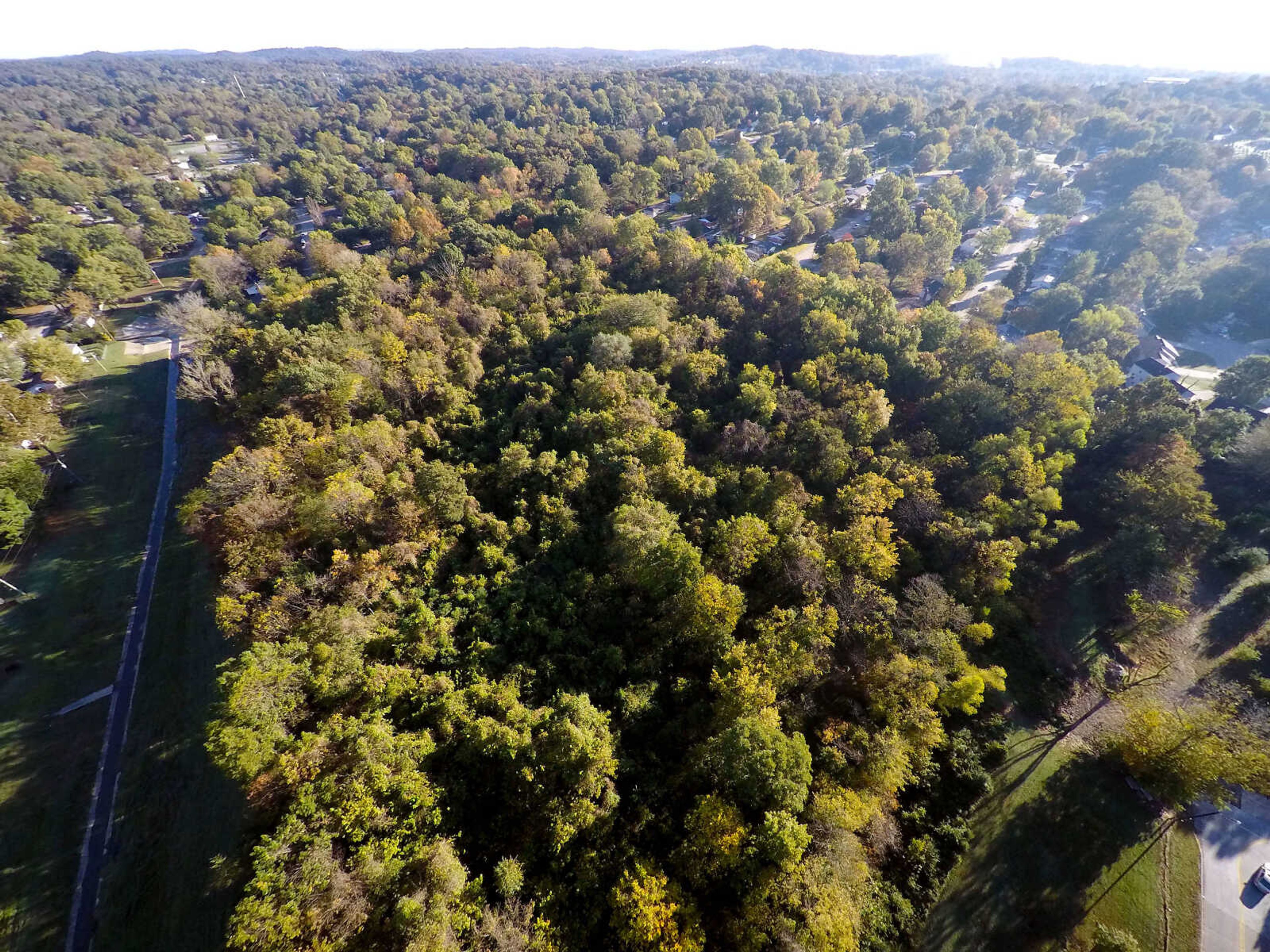Habitat board votes to move ahead with residential subdivision project
The board of directors of the local chapter of Habitat for Humanity has voted to proceed with plans to develop a residential subdivision for low-income residents on a 14-acre site in Cape Girardeau despite opposition from many neighbors. Board members unanimously agreed at their meeting Wednesday to modify the subdivision plan to create a wider, green buffer zone along the east boundary of the wooded site, realign Clark Avenue to create multiple turns that will slow traffic flow and add further stormwater detention beyond normal city requirements, Habitat officials said in a prepared statement released Thursday ...
The board of directors of the local chapter of Habitat for Humanity has voted to proceed with plans to develop a residential subdivision for low-income residents on a 14-acre site in Cape Girardeau despite opposition from many neighbors.
Board members unanimously agreed at their meeting Wednesday to modify the subdivision plan to create a wider, green buffer zone along the east boundary of the wooded site, realign Clark Avenue to create multiple turns that will slow traffic flow and add further stormwater detention beyond normal city requirements, Habitat officials said in a prepared statement released Thursday.
The new plan will scrap setback variances that could have prompted the city council to reject the plan.
The revised plan will meet all Cape Girardeau city regulations for the site, which is zoned R-1, single-family residential, said Al Stoverink, executive director of the local Habitat chapter.
City officials have said if the plan meets all zoning requirements, the city council must approve the project.
Board members looked at a number of options, including abandoning the project entirely.
Board president John Gary said in the statement, “We are convinced that this subdivision can go forward in a way that will create a great opportunity, not only for the families we serve, but also for the greater Cape Girardeau community. Our board understands that this endeavor represents a long-term commitment to quality development and maintenance of the area in a partnership approach between Habitat for Humanity and the new homeowners that will move into the area.”
Pastor and board vice president Jeff Long said in the statement Habitat officials listened to concerns expressed by neighbors at a meeting at city hall last month.
“While we do not agree that this plan should be abandoned or relocated to another section of the community, we are attempting to do all we can to mitigate the concerns we heard and be responsive to the residents of the surrounding area. The Habitat board takes seriously the need for the community’s good will and we sincerely hope that this action will serve that purpose,” he said.
Neighborhood residents objected to the proposed subdivision last month, arguing it would lower property values, create traffic problems as a result of extending Clark Avenue and lead to added stormwater problems.
Others opposed the project because it would put low-income residents in a single area.
Christine Rice, who lives on North Clark Avenue near where it dead ends at the southern tip of the woods, said she was disappointed by the board’s decision.
Rice said, “I feel like they don’t care what the impact is on the surrounding area.”
She said realigning the planned extension of Clark Avenue won’t keep motorists from speeding through the neighborhood.
Rice argued the board’s decision was focused on the opportunity to obtain donated land.
“They are going to get a chunk of free land,” she said.
Casey House, who lives on Ricardo Drive and whose property borders the proposed development, said she is convinced it will lower property values in the area.
Stoverink has suggested covenants might be adopted that would help protect the neighborhood.
One such covenant could prohibit renting out any of the homes.
House said she and her neighbors want such restrictions.
Even then, opposition would remain to the development, she said.
But at this point, House said it appears she and her neighbors have no power to stop the development.
Stoverink said the new plan will be presented to the city’s Planning and Zoning Commission as early as next month.
The city council then would be asked to approve the preliminary plat.
Stoverink said the record plat likely won’t be finalized until next spring or summer, as detailed improvement plans must be drawn up first.
The revised plan will have 34 residential lots instead of 40, he said.
Some of the lots may be sold to individuals who can obtain conventional loans to build homes, Stoverink said.
How many Habitat homes will be built for low-income residents has yet to be decided.
Individuals who qualify for Habitat homes must invest 150 to 350 hours of their own labor in helping with construction and pay a monthly mortgage.
A proposed 100-foot-wide green space would run along the east boundary of the site, serving to buffer the planned subdivision from homes along existing dead-end streets, Stoverink said.
An effort will be made to retain as many of the trees as possible.
Where construction disturbs the land, new clusters of evergreen trees will be planted, he said.
Stoverink said the two ends of Clark Avenue, now separated by the woods, will be connected as part of this project.
But the new plan would “bend it around” on the west side of the site, which would reduce the number of proposed cul-de-sacs from six to three.
Houses would be built along the cul-de-sacs and along the Clark Avenue extension, he said.
The original plan called for construction of a stormwater-detention structure on the north side of the site.
The modified plan would add another detention structure on the south end, Stoverink said.
Each house would be about 1,200 square feet in size and typically have a carport.
Stoverink said the residential structures would vary in design.
“It is not going to be a cookie-cutter subdivision,” he said.
“We sincerely believe that this development will enhance property values overall,” Stoverink said.
Jackson developer Chad Hartle, who has developed low-income housing for the elderly, owns the acreage.
He previously sought to develop the site, but neighborhood opposition derailed his plan.
Hartle has proposed to donate the land in exchange for state tax credits, Stoverink said.
Habitat already is seeking to obtain tax credits from the Missouri Housing Development Commission.
Hartle could receive tax credits equal to 55 percent of the cost of the donated land, Stoverink said.
The site is valued at $725,000, he said.
On that basis, Hartle could receive tax credits totaling nearly $400,000.
“We are hoping to get that approved and the land donation accomplished before the end of the year,” Stoverink said.
The proposed subdivision could take five to 15 years to complete, depending on the demand for housing, he said.
mbliss@semissourian.com
(573) 388-3641
Pertinent address:
Clark Avenue and Lombardo Drive, Cape Girardeau, Mo.
Connect with the Southeast Missourian Newsroom:
For corrections to this story or other insights for the editor, click here. To submit a letter to the editor, click here. To learn about the Southeast Missourian’s AI Policy, click here.









